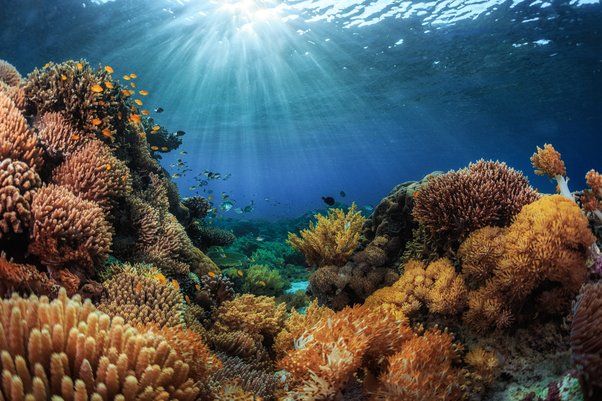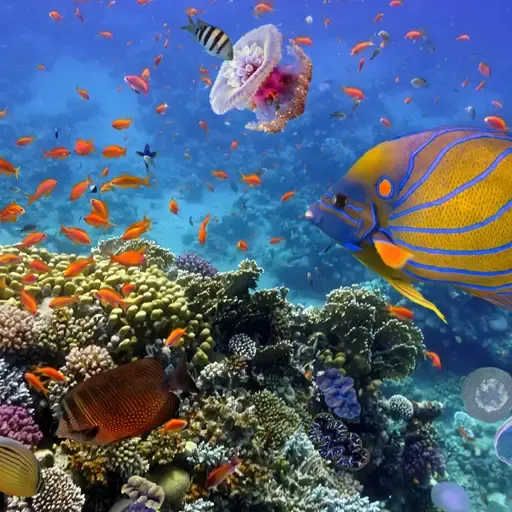Introduction
The water bodies of the earth covers over 70% of the Earth's surface, giving essential resources, ensuring the regulation of climate and encouraging diverse ecosystems. However, the activities of we humans that include climate change, overfishing and pollution has greatly put at risk the sustainability and health of these our marine bodies. As we continue to worry about the continues existence and longitivity these water bodies, some technologies are coming in place to address the challenges of water bodies. First of all, let us look at the problems that these water bodies encounter
Problems encountered by Marine Bodies
Our earthly water bodies face a great deal of threats in the likes of acidification of ocean, overfishing, plastic dumping/ pollution, oil spillage, and destruction of the water habitat. Particularly, plastic pollution is a major threat and with over millions of plastic wastes being dumped into the oceans annually, marine life is harmed and it's ecosystem is degraded.
Destructive fishing habits by humans reduce the stock of fish and also disrupts the food chain of marine habitats thereby putting in danger the lively hoof of people living in the coastal areas and also the health of the marine ecosystem.
Lastly, the change in climate increases these threats on marine bodies bringing about temperature rise of oceans, rise of the sea levels, and the bleaching of coral reefs. All this in turn lead to loss of marine habitats and coastal erosion.
These challenges needs to be tackled urgently with innovative actions and solutions so that we humans do not lose our marine body totally because of our actions.
What Technologies Can be Employed
Lucky enough, the advancement in technology offers new approaches and tools that can help to preserve the ocean life. These tools ranges from underwater robots to satellite monitoring which enable policy makers and even scientists to observe, get a better knowledge, and take measures on protection of the marine life. Let us look at some of the technological approaches that could be employed below.
1. Satellite Technology
While equipped with better imaging capability and also advances sensors, satellites can help researchers to observe the marine life in different aspects like the current of the oceans and sea surface temperature. The data provided by this satellite can bring valuable knowledge about the dynamics of the marine life and help to point out important area that need to be attended to.
2. Autonomous Underwater Vehicles (AUVs)
Water depths can be precisely and efficiently determined with the use of underwater explorative robotic platforms like the AUVs. AUVs while being equipped with cameras, sensors and some other needed instruments could collect information on the quality of water and the marine life in general. This data will enable help researchers to monitor with ease the marine ecosystem with high accuracy.
3. Machine Learning and Artificial Intelligence (AI)
Algorithms from machine learning and even AI are currently utilized in the analysis of a voluminous amount of ocean data, they help on pattern identification and also try to predict the changes in environment. Unfriendly marine activities like marine pollution, illegal fishing and degradation of coral reefs can easily be tracked in real time with the use of this technology hence making the effort to conserve marine life effective.
4. Ocean Cleanup Technologies
Floating barriers, specialized vessels and drones for oceans are all innovative technologies that can be employed to ensure the absence of plastic pollution from the water bodies. The main aim of these technologies is to ease the stress of traditional cleaning the water by setting up this technologies at strategic areas where the wastes gets into the water. In this way, it prevents the waste from even getting into the water at all.
5. Collaboration is Important
Though technology can be employed for vital purpose in water body conservation, the working together of governments, institutes for research, the local communities and NGOs is very necessary to achieve maximum conservation practice.
Summary
The sustenance and health of the water bodies on earth is very important for for all life on earth. By employing technological capability and ensured collaboration, the earth can finally put an end to the degradation of marine ecosystem thereby ensuring continuous existence on earth.


Upvoted. Thank You for sending some of your rewards to @null. Read my last posts to make sure that BLURT burning is profitable for you. Before using this bot please make sure your account has at least 100 BP. Get more BLURT:
@ mariuszkarowski/how-to-get-automatic-upvote-from-my-accounts@ blurtbooster/blurt-booster-introduction-rules-and-guidelines-1699999662965@ nalexadre/blurt-nexus-creating-an-affiliate-account-1700008765859@ kryptodenno - win BLURT POWER delegationNote: This bot will not vote on AI-generated content